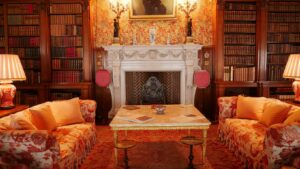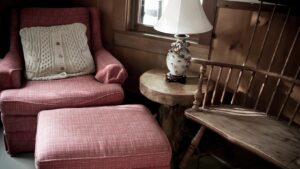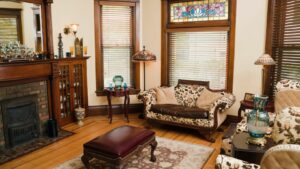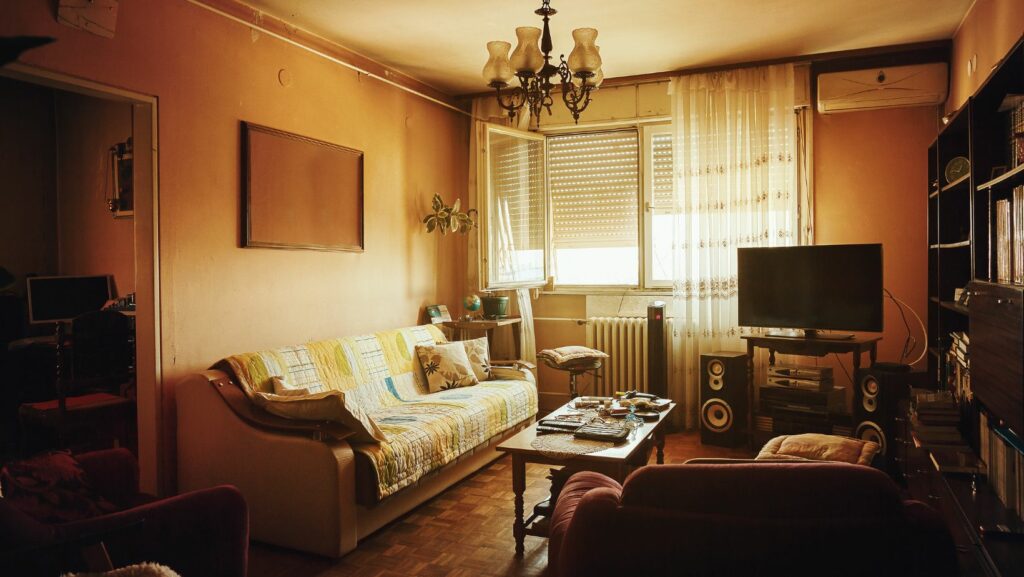Step back in time to the 1940s, an era when interior design was as much about comfort and practicality as it was about style. The living room, often the heart of the home, showcased a unique blend of traditional and modern elements that reflected the times. With the world in the throes of war and recovery, homeowners sought solace in spaces that offered both function and escapism.
The 1940s living room was characterized by its cozy, inviting atmosphere, featuring soft, muted colors and streamlined furniture that combined both form and function. Key elements like floral patterns, sturdy wood furniture, and handcrafted details were prevalent, creating a sense of warmth and familiarity. This design ethos not only captured the spirit of the decade but also laid the groundwork for contemporary home aesthetics.
Exploring the 1940s living room design offers a fascinating glimpse into a period that balanced austerity with bursts of creativity. It’s a testament to how historical events shape our domestic spaces, influencing how we live, relax, and entertain.
Living Room 1940s Interior Design
Color Palettes and Their Significance
 During the 1940s, living room color palettes centered on soft, soothing hues, providing a sense of calm during tumultuous times. Muted greens, soft blues, and pastel pinks dominated interiors, directly reflecting the era’s need for comfort and stability. These colors also helped to enhance the natural light in a room, making spaces appear larger and more open—a crucial feature in times when home spaces served multiple functions. Additionally, brighter accents such as deep reds or navy provided contrast and added a touch of elegance without overwhelming the overall serene aesthetic.
During the 1940s, living room color palettes centered on soft, soothing hues, providing a sense of calm during tumultuous times. Muted greens, soft blues, and pastel pinks dominated interiors, directly reflecting the era’s need for comfort and stability. These colors also helped to enhance the natural light in a room, making spaces appear larger and more open—a crucial feature in times when home spaces served multiple functions. Additionally, brighter accents such as deep reds or navy provided contrast and added a touch of elegance without overwhelming the overall serene aesthetic.
Popular Materials and Fabrics Used
The decade saw a predominance of sturdy, durable materials in living room furniture. Woods like oak and walnut were commonly used, typically finished with a clear varnish to showcase their natural grain. In terms of fabrics, the emphasis was on practicality and comfort. Cotton and wool were popular choices for upholstery, owing to their durability and ease of maintenance. Floral and striped patterns on fabrics not only added visual interest but also complemented the soft color schemes, linking aesthetics with functionality. This choice of materials and fabrics demonstrates how design adapted to meet both the physical needs and the psychological well-being of the era’s inhabitants, blending resilience with restorative qualities.
Decorative Elements and Accessories
Lighting Choices of the Era
 Lighting in the 1940s living room was not just functional; it was an integral decorative element that complemented the modernist influence on interior design. Table lamps, often crafted with ceramic or wooden bases, featured lampshades made from fabric or parchment, which diffused light softly through living spaces. Floor lamps with adjustable arms became widely popular, providing a direct light source that could be manipulated according to the needs of the room’s occupants. These lighting options merged practicality with aesthetic beauty, highlighting the dual-function design trends of the time. Additionally, chandeliers made from brass or chrome were commonly employed in formal areas, adding a touch of elegance and reflecting the period’s love for materials that showcased both strength and style.
Lighting in the 1940s living room was not just functional; it was an integral decorative element that complemented the modernist influence on interior design. Table lamps, often crafted with ceramic or wooden bases, featured lampshades made from fabric or parchment, which diffused light softly through living spaces. Floor lamps with adjustable arms became widely popular, providing a direct light source that could be manipulated according to the needs of the room’s occupants. These lighting options merged practicality with aesthetic beauty, highlighting the dual-function design trends of the time. Additionally, chandeliers made from brass or chrome were commonly employed in formal areas, adding a touch of elegance and reflecting the period’s love for materials that showcased both strength and style.
1940s Living Room Layouts and Space Utilization
Zoning Techniques for Multi-Functional Areas
 In the 1940s, living room layouts typically emphasized multi-functional use, a necessity during an era when homes served many purposes besides just living spaces. Zoning techniques played a crucial role in design to effectively manage the available space, achieving multiple activities within a limited area. They employed strategic placement of furniture and rugs to define different zones in the same room.
In the 1940s, living room layouts typically emphasized multi-functional use, a necessity during an era when homes served many purposes besides just living spaces. Zoning techniques played a crucial role in design to effectively manage the available space, achieving multiple activities within a limited area. They employed strategic placement of furniture and rugs to define different zones in the same room.
- Creating Conversation Zones: Furniture arrangements formed intimate seating groups, ideal for conversations and radio listening, popular activities of the era. These areas featured chairs and small tables placed close together, often anchored by an area rug to delineate the space from other functions in the room.
- Dining and Working Areas: Some living rooms incorporated a small dining or working area aside from the main living space. Residents often used portable screens or bookcases to separate these sections visually, maintaining functionality without permanent structural changes.
- Leisure and Entertainment Zones: With the rise of radio entertainment and later, television in some households, specific areas within living rooms were dedicated to leisure. These zones were typically arranged around the main entertainment unit, providing clear lines of sight for all seated occupants.
By using these zoning techniques, 1940s living room designs could accommodate a variety of activities, from hosting guests to daily family life, maximizing both space and functionality.

